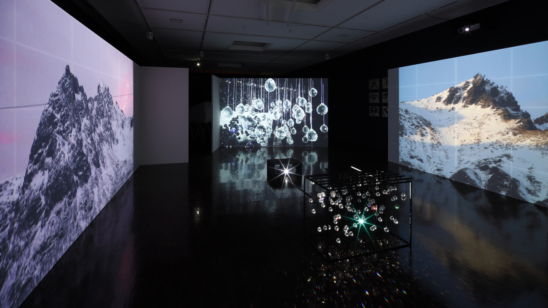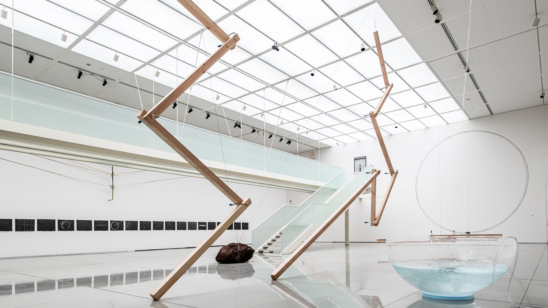MIKADO2
Well then… Was it autumn in Beijing? Or was it winter in London? While the little birds pecked in the silence of the morning, I chewed one mouthful after another of a slender stick of chocolate candy. The chocolate candy was named ‘MIKADO’, after a game that started in Japan, which used 41 sticks.
Yes… As I chew the ‘MIKADO’ candy one stick at a time, my thoughts, still drowsy from waking, slide to the symbol of the ‘Land of the Rising Sun.’ In the exhibition space, what facilitates, breaks down, extinguishes, and restores a chain of simple images like those seen in ‘MIKADO’ is a paratext, something which forms a boundary and runs parallel to the space which will be read into by the viewer. However, this paratext, which has just been written through a smartphone, appears headed somewhere, and is in fact, headed nowhere. (I do declare it.)
Yes… Despite being unrelated, images and text flirt with each other as a matter of course, and works that are respectively attributable to either are displayed in the Japanese-style houses of the former capital. Yes… The thing in the middle of the exhibition is not transparency between curation and exhibition, or paratext and text (space). However, neither is it a total veil of darkness. The veil of night is pierced innumerably by the twinkling of thousands of stars. One’s gaze is drawn back and forth from one side of the veil to the other, and from there back again (perhaps).
Yes… After Roland Barthes’s “The Death of the Author”, my gimmicks, which are at the level of bringing the author’s ‘space’ into the text, have been spread about. That is, along with this paratext, which was written in the midst of the biggest joke of the century. Although that too, is irrelevant.
- Supported by
- Public Interest Incorporated Foundation, Nishieda Foundation
- Curated by
- Hideyuki Shimabayashi
- Venue
- Zuiun-an




